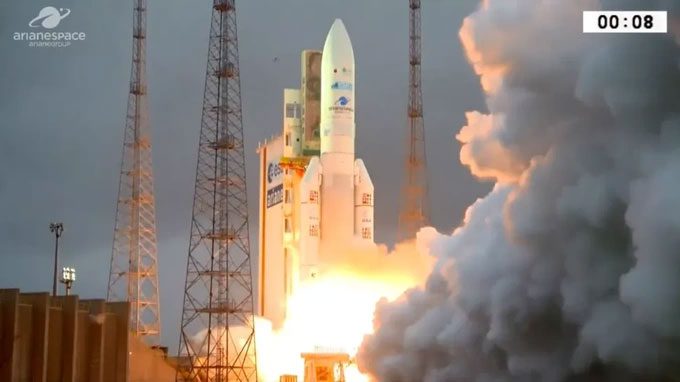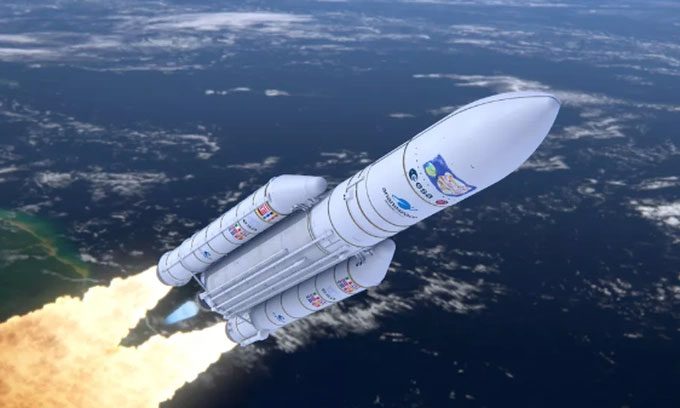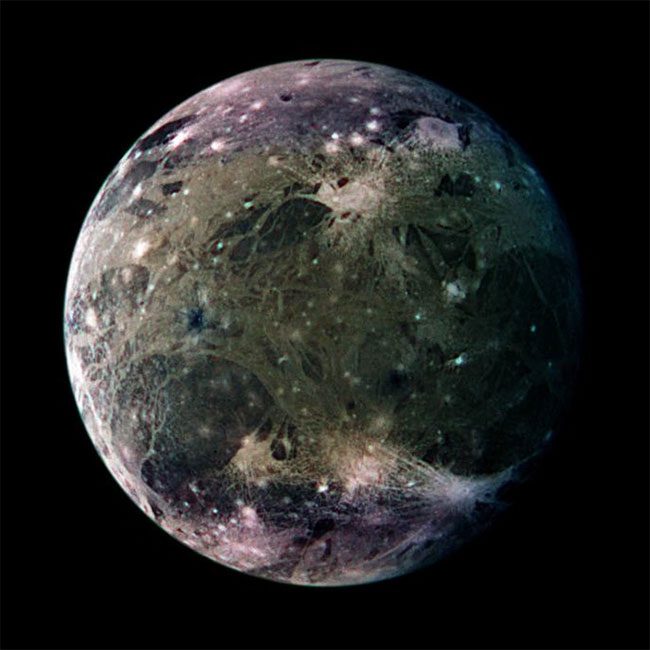The JUICE mission by the European Space Agency (ESA) is set to launch on April 13, with its destination being Jupiter.
The Jupiter Icy Moons Explorer (JUICE) mission, covering a journey of approximately 740 million kilometers and lasting 8 years, is managed by ESA and will be initiated at 19:15 on April 13.

An Ariane 5 rocket launched from French Guiana on April 5, 2018, carrying two commercial communication satellites into Earth’s orbit. (Photo: Arianespace).
In this mission, the Ariane 5 rocket will carry instruments to explore three of Jupiter’s four major moons, the largest planet in the Solar System.
Due to the complexity of the flight trajectory, the Ariane 5 rocket will likely need to execute the entire launch process in just 1 second. This will also be the final flight of the Ariane 5 after more than 30 years of service.
The rocket in the JUICE mission is expected to reach Jupiter’s orbit in July 2031, which is over 8 years from now.
Once there, the system will spend approximately three and a half years orbiting the planet, while exploring three of Jupiter’s four major moons: Europa, Ganymede, and Callisto.
Ganymede and Callisto are the two primary targets of the mission, as they are believed to have the highest potential for supporting life.

The Ariane 5 rocket will need to launch into the atmosphere in less than one second. (Photo: ESA).
According to ESA, the JUICE spacecraft will operate in a harsh environment with high radiation levels, created by the strong magnetic field of Jupiter and charged particles emitted from the planet and its volcanic moons.
Due to radiation exposure, the spacecraft designers had to shield most of the critical electronic equipment inside two lead-lined compartments. Essentially, it resembles a mini nuclear bunker placed on the spacecraft.
However, this does not prevent the spacecraft’s solar panels from degrading rapidly due to the high radiation levels.
To prevent JUICE from becoming uncontrolled space debris, ESA plans to land the spacecraft on the surface of Ganymede once its mission is complete.

Ganymede – Jupiter’s largest moon, may harbor life (Photo: Getty).
The reason scientists are so interested in Jupiter’s moons is that they seem to contain vast oceans of liquid water hidden beneath thick layers of ice several kilometers deep.
Among these oceans, it is entirely possible that one or more conditions suitable for basic life forms exist.
Nevertheless, even if JUICE does not find evidence of life on Jupiter’s moons, this mission will still help scientists gain a better understanding of the conditions suitable for life beyond Earth.
If the mission goes smoothly, it will mark a new milestone for humanity, with a spacecraft orbiting a moon that is not Earth’s for the first time.
The mission will also pave the way for a series of potential landing missions in the future to Jupiter’s ocean-filled worlds.





















































